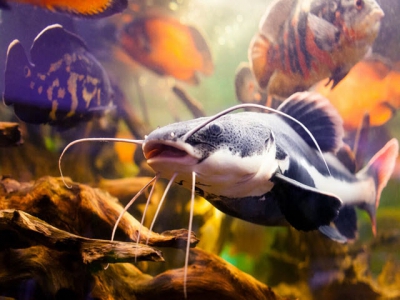How farmers can make more money in catfish farming - Part 1

The level of success we get in catfish farming is usually tied to the level of management practices we decide to put in place in conjuction with the level of efficiency we achieve from our culture systems, writes Lanre Ogunsina, Fish Unlimited in Part 1.
During the 2014 fish farming season, two farmer friends of mine in Nigeria stocked their earthen ponds with African catfish seeds.
Their ponds had water supplied from an adjacent, perenial, gentle river whose water quality parameters were suitable for fish farming.
Farmer A's pond had a dimension of 20m X 7m X 1.4m
Farmer B's pond had a dimension of 24m X 5m X 1.5m.
Farmer A stocked 2500 juveniles and Farmer B stocked 2500 juveniles on Saturday, 29 March, 2014.
The two farmers were both used to the business and the first few days after stocking went without much event for both of them. They often exchanged pleasantaries every morning and evening after the feeding times.
On the last Saturday of every month the two farmers took fish samples from their ponds and carefully documented the results just like they were advised.
I followed the documented data with keen interest and by the end of month two, farmer B knew something was not right with his fish. They were not growing as fast as farmer A's fish.
On Saturday 31 Mayt, Farmer B noticed that farmer A's fish were bigger. On average, farmer A's fish were about 72g bigger than farmer B's fish. He was really worried.
Farmer B called the feed suppliers and records showed that despite the fact the the two farmers stocked the same quantity of fish, the quantity of feed consumed by the two stocked was quite different.
I had a fair idea of what the problem could be because I supplied the farmers with fish seeds.
On the evening of 29 July, 2014, I received a call from farmer B. He expressed his concerns over the fish I sold to him and he accused me that something was wrong with the catfish juveniles I sold to him.

I encouraged him to meet with me the following morning with his feeding records. He agreed and we met on the morning of 30 July, 2014.
Farmer B showed up in my Hatchery by 9.30 am with his stocking and feeding records. From the records he presented, which tallies with my sales record, the average weight of fish he bought from me on the 29 March was 10g.
The interesting issue I pointed to him had to do with doing things differently. Fish farming is dynamic. We need to look at different ways to maximize the potential of every fish with regards to feed conversion, survival, genetic improvement and environmental adaptation.
There is something I realised with fish we culture in ponds. The level of success we get is usually tied to the level of management practices we decide to put in place in conjuction with the level of efficiency we achieve from our culture systems.
I also pointed farmer B's attention to the fact that farmer A approached me sometime in January 2014.
He told me of his challenges on his farm. He asked me if there were ways through which he could achieve better results from his fish farming venture.
After checking his records, (which was accurate and well documented), I advised him that he would need to change some things he was doing. The first of which was the average weight of fish he usually stocked.
I urged him to stock advanced juveniles. I told him the advantages in doing so and he agreed.
Of course, these advanced juveniles will cost him more, but there was more to gain.
So when stocking time came, I sold to him juveniles that were averaging 35g in weight.
With this approach, farmer A's fish stand a better chance at surviving the hardship in the ponds during the first couple of weeks.
Infact, from my experience, fish stocked at 35g into ponds have a percentage survival rate of 80 to 83 per cent unlike the 60 per cent or less survival rate which fishes stocked at 10g have.
Related news
Tools

Phối trộn thức ăn chăn nuôi

Pha dung dịch thủy canh

Định mức cho tôm ăn

Phối trộn phân bón NPK

Xác định tỷ lệ tôm sống

Chuyển đổi đơn vị phân bón

Xác định công suất sục khí

Chuyển đổi đơn vị tôm

Tính diện tích nhà kính

Tính thể tích ao



 Pangasius farming - An overview
Pangasius farming - An overview  Effects of Bamboo Charcoal Added Feed on Reduction…
Effects of Bamboo Charcoal Added Feed on Reduction…